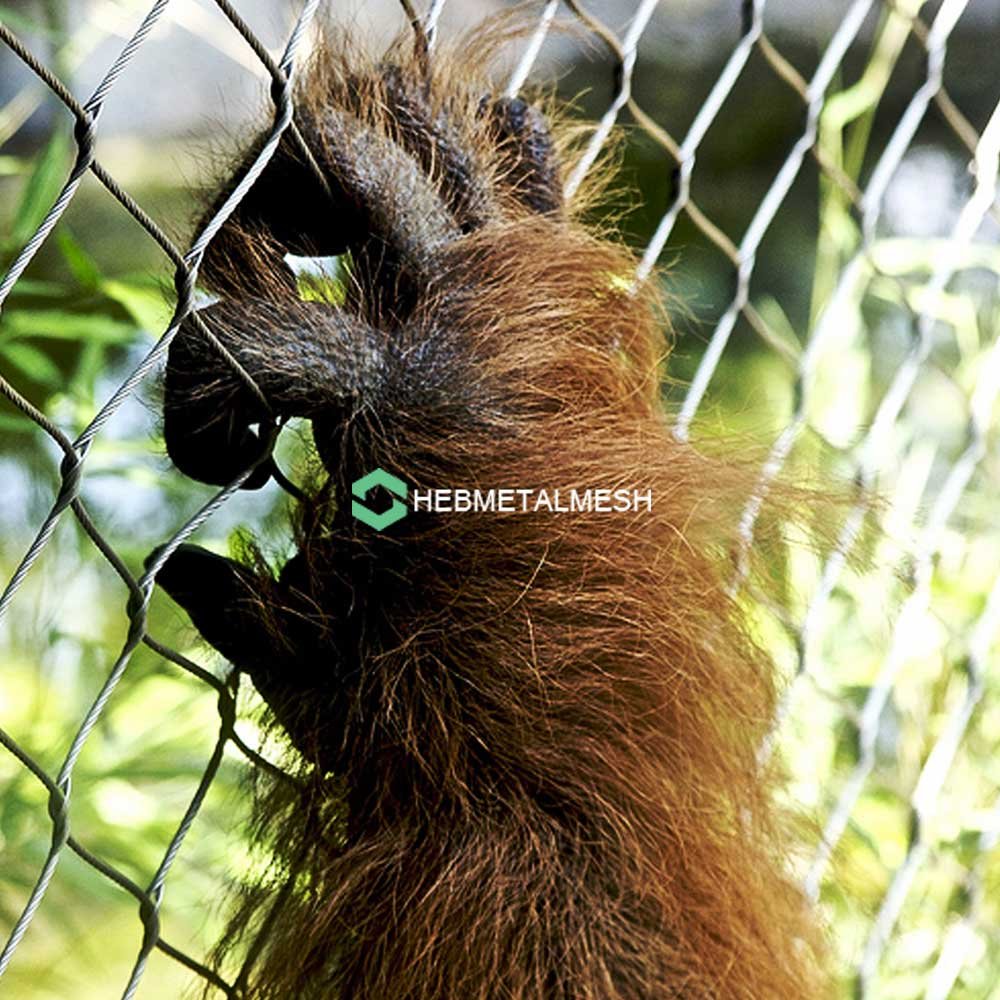Creating a safe and engaging environment for animals in exhibits is a complex task.
One key aspect is the selection of the right animal exhibit mesh.
This mesh not only ensures the safety of the animals and visitors but also enhances the overall aesthetics of the exhibit.
In this guide, we will delve into the importance, selection, and maintenance of animal exhibit mesh.

Importance of Proper Animal Exhibit Mesh
The right animal exhibit mesh is crucial for the safety of both animals and visitors.
It prevents animals from escaping and protects visitors from potential harm.
Moreover, the mesh contributes to creating a habitat-like environment for the animals.
It also plays a role in preventing the spread of diseases between animal enclosures.
Types of Animal Exhibit Mesh Materials
Different types of mesh materials are available for animal exhibits.
Stainless steel mesh is a popular choice due to its durability and resistance to corrosion.
For certain species with unique requirements, specialized mesh is needed.
For instance, climbing animals or those with sharp teeth may require a specific type of mesh.
- Stainless steel mesh
- Specialized mesh for climbing animals
- Mesh for animals with sharp teeth
Mesh Size and Weave Pattern Considerations
The size and weave pattern of the mesh play a crucial role in animal exhibits.
They are key factors in preventing animal escapes and ensuring the enclosure is secure.
The mesh size should be chosen based on the size and habits of the animals.
The weave pattern, on the other hand, can affect the visibility of the animals and the overall aesthetics of the exhibit.
Enhancing Visitor Experience Through Mesh Design
The design of the animal exhibit mesh can greatly enhance the visitor experience.
A well-chosen mesh allows clear visibility of the animals, contributing to a more engaging and educational visit.
Moreover, the right mesh design can also contribute to the overall aesthetics of the exhibit, making it more appealing to visitors.
Customization and Installation of Animal Mesh
Animal exhibit mesh can be customized to fit various enclosure shapes and sizes. This flexibility allows for unique and tailored designs that cater to the specific needs of each animal species.
The installation process is crucial to ensure the mesh is taut and secure. Proper installation techniques can prevent potential escapes and ensure the safety of both animals and visitors.
Moreover, some mesh designs offer quick assembly and disassembly. This feature is particularly useful for temporary exhibits or for enclosures that require frequent modifications.
Maintenance and Longevity of Exhibit Mesh
Regular maintenance of the animal exhibit mesh is essential to keep it clean and intact over time. This includes routine checks for any signs of wear or damage that could compromise the enclosure’s security.
Certain mesh materials, like stainless steel, offer UV resistance and anti-rust properties. These features contribute to the longevity of the mesh, especially in outdoor exhibits exposed to various weather conditions.
Investing in high-quality mesh can result in long-term benefits. Despite the initial cost, durable and well-maintained mesh can save resources in the long run by reducing the need for frequent replacements.
Conclusion: The Role of Mesh in Animal Welfare and Exhibit Success
The right animal exhibit mesh plays a crucial role in ensuring the welfare of the animals and the success of the exhibit. It provides a safe and secure environment for the animals while enhancing the visitor experience.
In conclusion, investing in high-quality, durable, and well-designed mesh is a worthwhile decision. It not only contributes to animal welfare and visitor satisfaction but also to the overall success of the animal exhibit.

